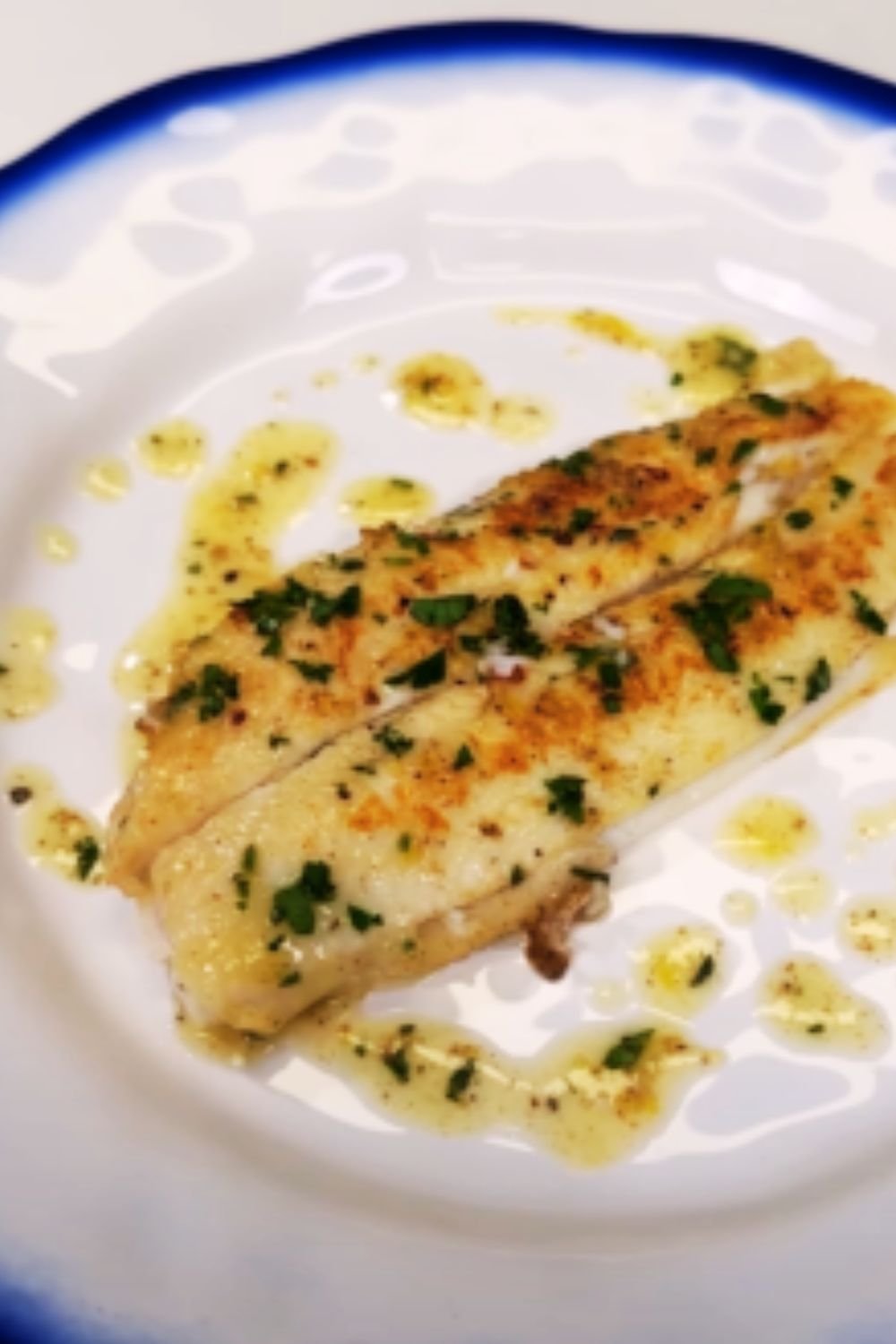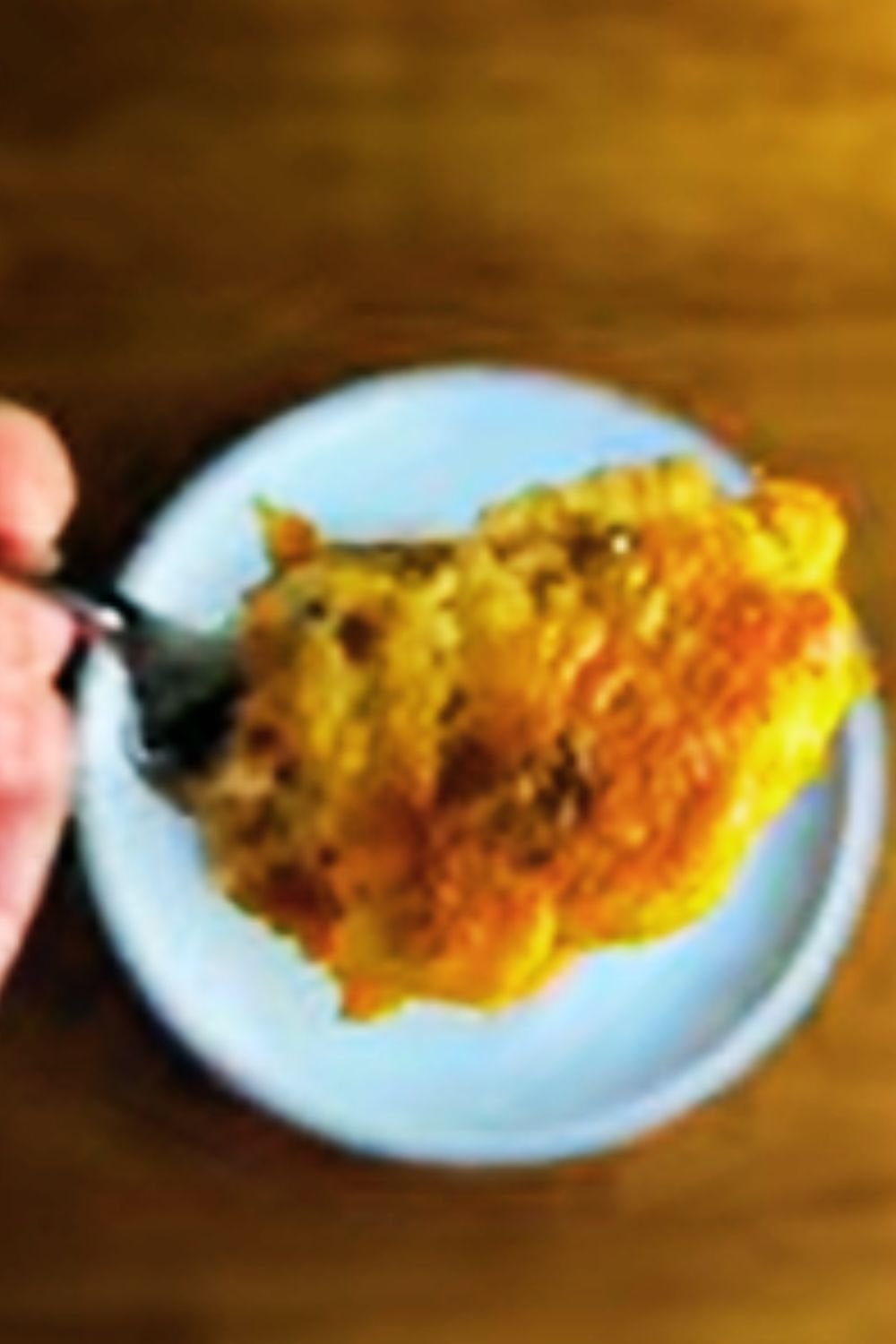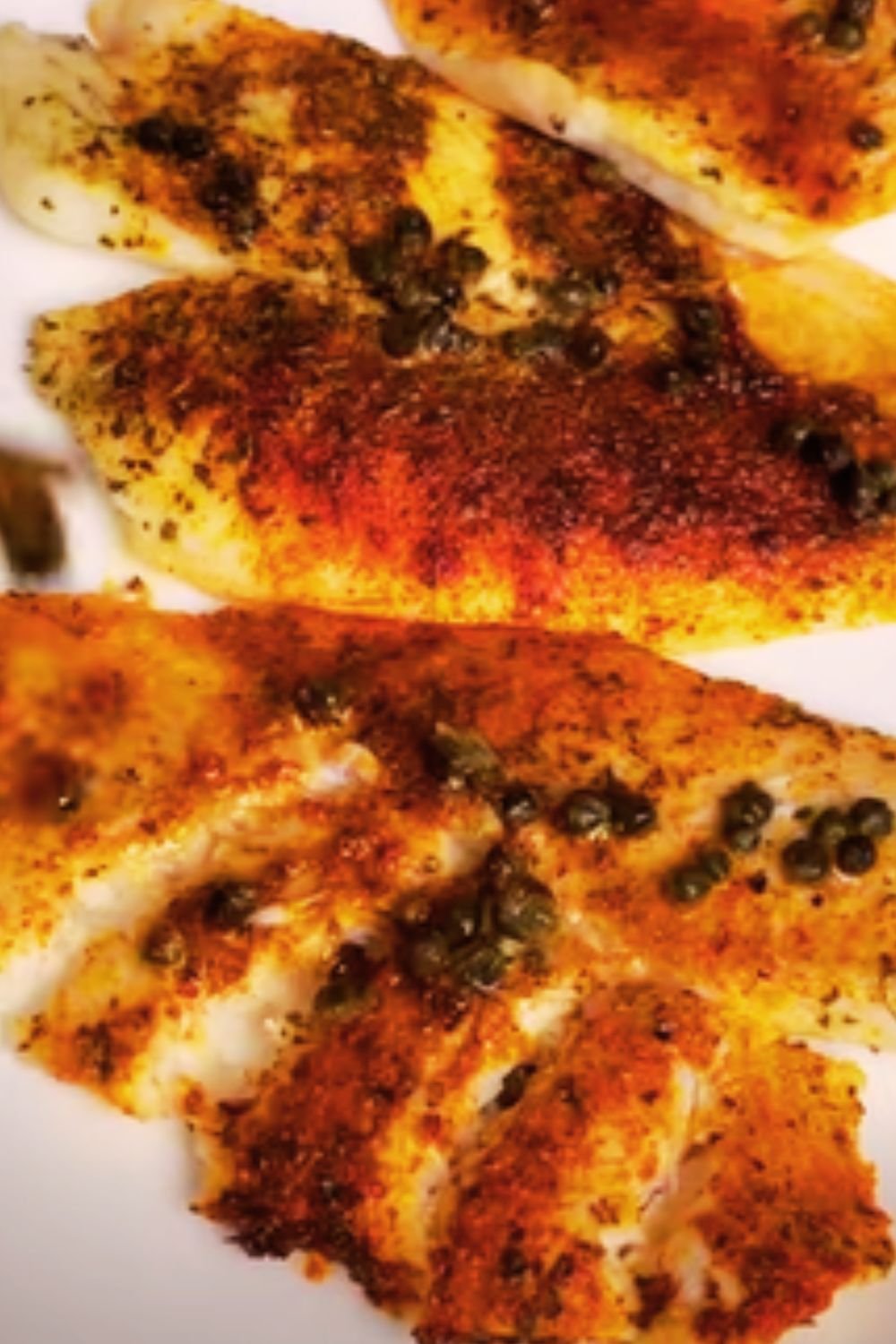Have you ever stood in front of the seafood counter wondering what to do with that beautiful, delicate sole fish? I’ve been there too! After years of experimenting with seafood recipes, I’ve perfected what I consider the absolute best way to prepare sole: my Zesty Lemon Garlic Sole recipe. This dish has become a staple in my home, and for good reason – it’s quick, incredibly flavorful, and feels both elegant and effortless at the same time.
Sole is one of those underappreciated fish varieties that deserves more attention. Its mild, slightly sweet flavor and delicate texture make it perfect for absorbing the bright flavors of lemon and garlic. What I love most about cooking with sole is how quickly it transforms from raw to perfectly done – you’ll have this impressive dish on the table in under 30 minutes!
In this article, I’ll walk you through everything you need to know about selecting the freshest sole, preparing it properly, and creating a restaurant-worthy lemon garlic sauce that will have everyone asking for seconds. So let’s dive in and discover why this might just become your new favorite weeknight dinner!
What Makes Sole Fish Special?
Before we get to the cooking, let’s talk about what makes sole such a wonderful fish to work with. Sole is a flatfish with a distinctive oval shape and eyes that both appear on one side of its body. The most common varieties you’ll find in markets include:
- Dover sole: The most prized variety with a delicate, sweet flavor
- Petrale sole: Slightly firmer with a mild, nutty taste
- Lemon sole: Not actually a true sole, but similar in texture and flavor
- Grey sole: Also known as witch flounder, with a clean taste and fine texture
What makes sole particularly special for home cooks is its:
- Delicate, mild flavor that appeals to even picky seafood eaters
- Thin fillets that cook extremely quickly
- Versatile nature that pairs well with a variety of seasonings
- Light texture that makes for an elegant but not heavy meal
I personally prefer Dover sole when I can find it, but all varieties work beautifully in this recipe. The most important thing is freshness – something I’ll cover in detail next.
Selecting the Perfect Sole Fish
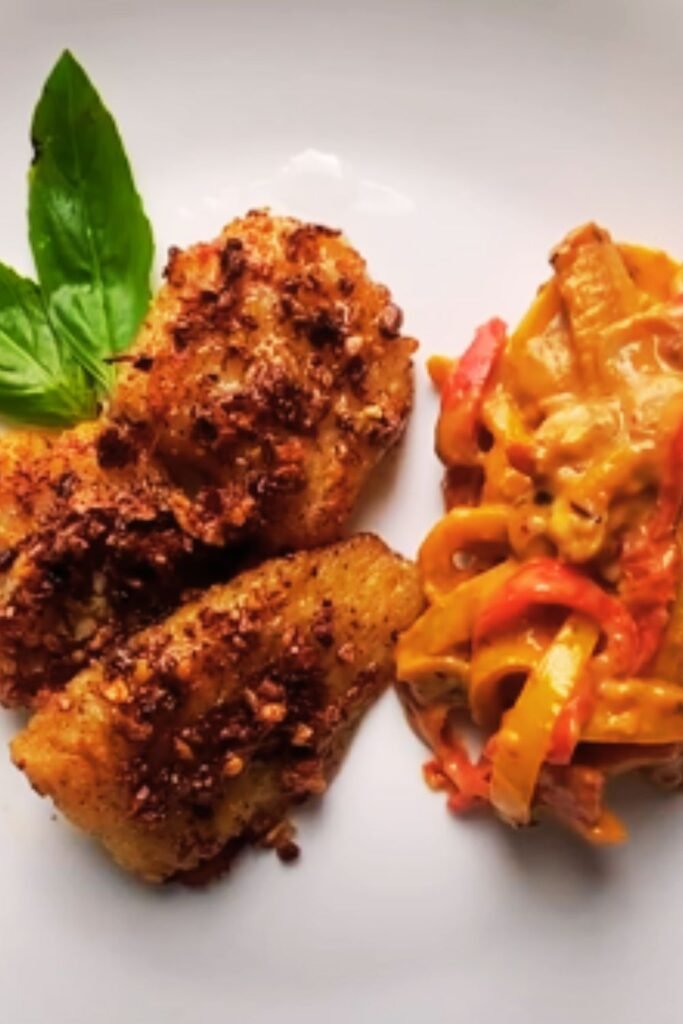
Choosing fresh fish is absolutely crucial for this recipe to shine. When I’m at the fish counter, here’s what I look for when selecting sole:
Appearance:
- The flesh should be translucent and shiny, not dull or opaque
- Look for fillets with no discoloration, dark spots, or yellowing edges
- The thinner portions of the fillet should not appear dried out
Smell:
- Fresh sole should have a clean, oceanic scent
- Avoid fish with a strong “fishy” or ammonia-like smell
Texture:
- When gently pressed, the flesh should be firm and spring back
- Avoid fillets that feel mushy or leave an indentation when touched
If you don’t have access to a good fish counter, don’t worry! Frozen sole can work wonderfully too. Just make sure to thaw it properly in the refrigerator overnight and pat it very dry before cooking. This step is essential for getting that beautiful golden crust that makes this dish so special.
Ingredients You’ll Need
Let’s gather everything we need for this lemon garlic sole recipe. I love how simple the ingredients list is while still delivering incredible flavor:
For the Fish:
- 1 pound (450g) fresh sole fillets
- Salt and freshly ground black pepper
- 1/4 cup all-purpose flour (optional, for dredging)
- 2 tablespoons olive oil
- 2 tablespoons unsalted butter
For the Lemon Garlic Sauce:
- 3 cloves garlic, minced
- 1/4 cup fresh lemon juice (about 2 lemons)
- Zest of 1 lemon
- 1/4 cup dry white wine (can substitute with chicken broth)
- 2 tablespoons cold butter, cubed
- 3 tablespoons fresh parsley, chopped
- 1 tablespoon capers, drained (optional)
- Red pepper flakes (optional, for heat)
For Serving:
- Lemon wedges
- Additional fresh herbs (parsley, dill, or chives)
- Steamed asparagus, broccoli, or green beans
- Fluffy rice pilaf or crusty bread
What makes this recipe so special is the balance between the delicate fish and the punchy sauce. The acidity from the lemon brightens everything up, while the garlic adds depth without overpowering the sole. I particularly love adding capers for their briny pop, but they’re completely optional if you prefer a cleaner flavor profile.
Essential Equipment
One of the things I appreciate about making sole is that you don’t need any fancy equipment. Here’s what I recommend having ready:
- Large non-stick skillet or well-seasoned cast iron pan (12-inch is ideal)
- Fish spatula or thin flexible spatula
- Microplane grater for zesting lemons
- Small bowl for flour (if dredging)
- Paper towels for patting fish dry
- Instant-read thermometer (optional but helpful)
The most important piece is definitely the right pan. Since sole is so delicate, having a good non-stick surface makes flipping the fillets much easier and prevents them from falling apart.
Step-by-Step Cooking Method
Now let’s walk through the cooking process step by step:
1. Prepare the Sole Fillets
The key to perfect sole starts with proper preparation:
- Remove the fillets from the refrigerator about 15 minutes before cooking to take the chill off
- Pat them very dry with paper towels (this is crucial for achieving a good sear)
- Season both sides generously with salt and freshly ground black pepper
- If dredging in flour (which I recommend for a beautiful golden crust), spread flour on a plate and lightly coat each fillet, shaking off any excess
2. Cook the Sole
- Heat a large non-stick skillet over medium-high heat
- Add 2 tablespoons olive oil and 2 tablespoons butter
- Once the butter stops foaming and starts to turn golden (but not brown), carefully add the fish fillets
- Cook for 2-3 minutes on the first side until golden brown
- Carefully flip using a thin spatula and cook for another 1-2 minutes
- The fish is done when it flakes easily and reaches an internal temperature of 145°F (63°C)
- Transfer to a warm plate and cover loosely with foil
Pro Tip: Don’t overcrowd the pan! Depending on the size of your skillet and fillets, you may need to cook in batches. Keep the first batch warm in a low oven (200°F/95°C) while you cook the rest.
3. Make the Lemon Garlic Sauce
This sauce comes together in minutes but adds incredible flavor:
- In the same pan (don’t clean it!), reduce heat to medium-low
- Add minced garlic and cook for 30 seconds until fragrant (be careful not to burn it)
- Pour in lemon juice and white wine, scraping up any browned bits from the bottom of the pan
- Add lemon zest and let the sauce reduce by half, about 2-3 minutes
- Remove from heat and whisk in the cold butter cubes one at a time
- Stir in fresh parsley, capers (if using), and a pinch of red pepper flakes if desired
- Taste and adjust seasoning with salt and pepper
4. Serve
- Pour the warm sauce over the sole fillets
- Garnish with additional fresh herbs and lemon wedges
- Serve immediately with your choice of sides
The entire cooking process takes less than 15 minutes once you have everything prepped, making this perfect for busy weeknights or last-minute dinner guests!
Nutritional Benefits of Sole Fish
One of the reasons I love incorporating sole into my meal rotation is its impressive nutritional profile. Here’s a breakdown of what makes sole such a healthy choice:
| Nutrient | Amount (per 4 oz/113g) | % Daily Value* |
|---|---|---|
| Calories | 100 | 5% |
| Protein | 20g | 40% |
| Fat | 1.5g | 2% |
| Saturated Fat | 0.3g | 1.5% |
| Cholesterol | 60mg | 20% |
| Sodium | 90mg | 4% |
| Vitamin D | 2mcg | 10% |
| Vitamin B12 | 1.8mcg | 75% |
| Selenium | 35mcg | 64% |
| Phosphorus | 240mg | 19% |
*Based on a 2,000 calorie diet
As you can see, sole is exceptionally high in protein while being very low in fat and calories. It’s also an excellent source of several important nutrients:
- Vitamin B12: Essential for nerve function and red blood cell formation
- Selenium: A powerful antioxidant that supports immune function
- Phosphorus: Important for bone health and energy metabolism
- Omega-3 fatty acids: While not as high as in fattier fish like salmon, sole still provides beneficial anti-inflammatory omega-3s
This nutritional profile makes sole an excellent choice for anyone looking to incorporate more lean protein into their diet, especially those following a low-calorie or low-fat eating plan.
Flavor Variations to Try
While the classic lemon-garlic combination is my go-to preparation for sole, there are many delicious variations to explore:
Mediterranean Style
- Add chopped kalamata olives, sun-dried tomatoes, and oregano to the sauce
- Finish with crumbled feta cheese just before serving
Herb Butter Version
- Skip the sauce and instead top the cooked fish with a compound butter made with herbs, lemon zest, and garlic
- Let it melt over the warm fish for a simpler but equally delicious preparation
Asian-Inspired
- Replace the lemon juice with lime and add a splash of soy sauce and honey
- Garnish with sliced scallions, cilantro, and sesame seeds
Nutty Crust
- Before cooking, press the floured fillets into finely chopped almonds or pistachios
- The nuts add wonderful texture and flavor contrast to the delicate fish
These variations keep the dish exciting even when you make it regularly, as I often do. The versatility of sole makes it a perfect canvas for experimenting with different flavor profiles.
Perfect Side Dishes
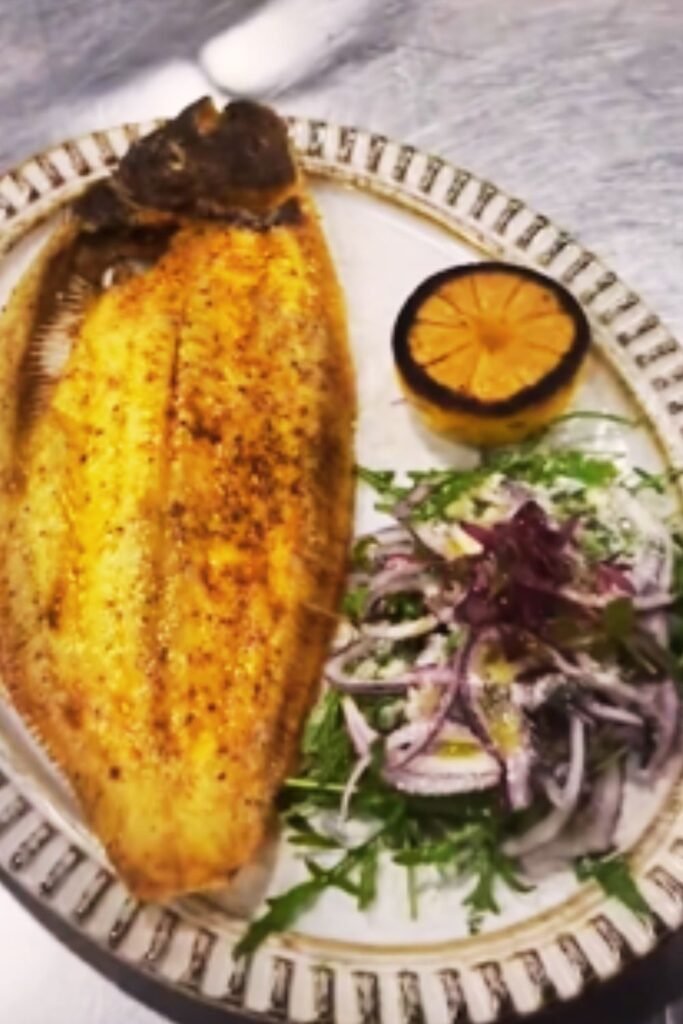
A good side dish should complement the delicate flavor of the sole without overwhelming it. Here are my favorite pairings:
Vegetables:
- Asparagus: Either roasted or steamed with a squeeze of lemon
- Green beans: Try them with sliced almonds for texture
- Spinach: Quickly sautéed with a touch of garlic
- Roasted cherry tomatoes: They add a beautiful color contrast and sweet flavor
Starches:
- Rice pilaf: The perfect canvas for soaking up the delicious sauce
- Crusty bread: Nothing beats dipping good bread in the lemony sauce
- Mashed cauliflower: A lighter alternative to potatoes
- Angel hair pasta: Tossed with a bit of olive oil and herbs
I particularly love serving this dish with both asparagus and rice pilaf – the combination of colors, textures, and flavors creates a restaurant-worthy plate that’s actually quite simple to put together.
Common Mistakes to Avoid
After making this dish countless times, I’ve learned what can go wrong and how to avoid it:
- Overcooking the fish: Sole cooks extremely quickly – just 2-3 minutes per side is usually sufficient. Overcooked sole becomes tough and rubbery.
- Not patting the fish dry: This is perhaps the most common mistake. Excess moisture prevents proper browning and can make the fish steam rather than sear.
- Using a pan that’s too hot: Medium-high heat is perfect; high heat will burn the delicate fish before it’s cooked through.
- Overcrowding the pan: Cook in batches if necessary to ensure each fillet has plenty of space.
- Burning the garlic: When making the sauce, the garlic needs just 30 seconds to become fragrant. Any longer and it will burn and taste bitter.
- Not reducing the sauce enough: The sauce should coat the back of a spoon before adding the butter. If it’s too thin, it won’t cling properly to the fish.
- Forgetting to taste for seasoning: Fish needs proper seasoning. Always taste your sauce before pouring it over the fish and adjust as needed.
Avoiding these pitfalls will help ensure your lemon garlic sole turns out perfectly every time.
Make-Ahead Tips
While sole is best enjoyed immediately after cooking, there are a few things you can prepare ahead of time:
- Prepare the lemon and garlic: Zest and juice the lemons and mince the garlic up to a day in advance, storing them separately in the refrigerator.
- Make compound butter: If using the herb butter variation, this can be made days in advance and stored in the refrigerator or freezer.
- Measure and prep all ingredients: Having everything ready in advance (mise en place) makes the actual cooking process much smoother.
I don’t recommend cooking the fish ahead of time as it really doesn’t reheat well due to its delicate texture. However, if you do have leftovers, they can be gently reheated in a low oven (300°F/150°C) with a splash of water to create steam.
Serving Suggestions for Different Occasions
This versatile dish can be dressed up or down depending on the occasion:
Weeknight Family Dinner
- Serve family-style on a large platter
- Keep sides simple with steamed vegetables and rice
- Skip the wine in the sauce and use broth instead if preferred
Elegant Dinner Party
- Plate individually with careful attention to presentation
- Add a starter like a light salad or clear soup
- Consider individual gratin dishes for a more upscale look
Light Lunch
- Serve over mixed greens for a beautiful salad
- Add a slice of crusty bread on the side
- Keep portions slightly smaller for a midday meal
Romantic Dinner for Two
- Scale the recipe down for two servings
- Light some candles and serve with a chilled glass of the same white wine you used in the sauce
- Add an indulgent dessert to complete the meal
No matter the occasion, this dish always feels special while being remarkably simple to prepare.
Frequently Asked Questions
Q: Can I use frozen sole fillets for this recipe? A: Absolutely! Just make sure to thaw them completely in the refrigerator overnight and pat them very dry before cooking. Frozen sole can work beautifully as long as it’s properly thawed and dried.
Q: What can I substitute for white wine in the sauce? A: Chicken or vegetable broth makes an excellent non-alcoholic substitute. You can add an extra squeeze of lemon to maintain the acidity that wine provides. For another dimension of flavor, try adding a tablespoon of white wine vinegar to the broth.
Q: My sole fillets fell apart when I tried to flip them. What went wrong? A: This usually happens when the pan isn’t hot enough when you add the fish, the fish is too wet, or you try to flip it too early. Make sure your pan is properly preheated, pat the fish very dry, and wait until it develops a golden crust before attempting to flip it.
Q: Can I make this dish with other types of fish? A: Yes! This recipe works wonderfully with other thin white fish fillets like flounder, tilapia, or small cod fillets. For thicker fish, you’ll need to adjust the cooking time accordingly.
Q: How do I know when the fish is done cooking? A: Sole is cooked when it turns from translucent to opaque and flakes easily with a fork. If you have an instant-read thermometer, the fish should reach 145°F (63°C) at its thickest point.
Q: What’s the best way to zest a lemon without getting the bitter white pith? A: I recommend using a microplane grater and applying only light pressure as you run the lemon across it. Only the colored part of the peel contains the flavorful oils you want.
Q: Can I make this dish dairy-free? A: Yes! Replace the butter with additional olive oil or a plant-based butter alternative. The sauce won’t be quite as rich but will still be delicious.
Q: How do I store and reheat leftovers? A: Store leftovers in an airtight container in the refrigerator for up to 2 days. Reheat gently in a low oven (300°F/150°C) with a splash of water to create steam, which helps prevent the fish from drying out.
Delicious Variations for Different Dietary Needs
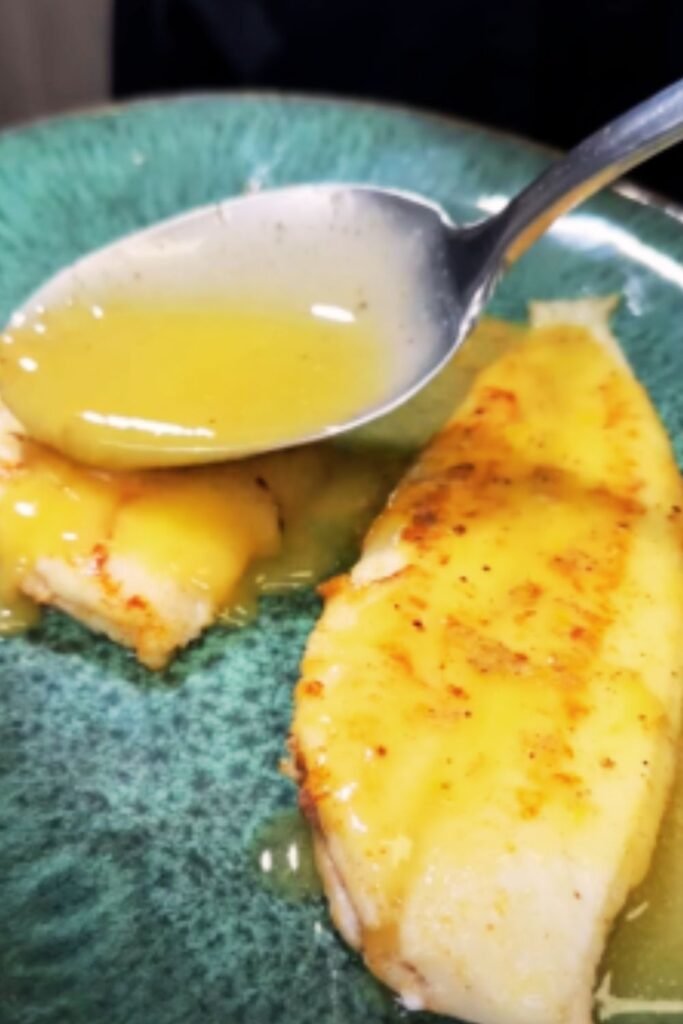
One of the things I love about this recipe is how easily it can be adapted for various dietary preferences and restrictions:
Gluten-Free Version
- Skip the flour dredging entirely for a naturally gluten-free option
- Alternatively, use rice flour or a gluten-free flour blend for dredging
- Ensure any broth used is certified gluten-free
Dairy-Free Adaptation
- Replace butter with olive oil or a plant-based butter alternative
- The sauce won’t be quite as rich but will still have great flavor
- Consider adding a tiny bit of nutritional yeast for umami depth
Paleo/Whole30 Friendly
- Use ghee instead of butter
- Replace the flour with almond flour or coconut flour
- Use bone broth instead of wine in the sauce
Low-Carb/Keto Option
- Skip the flour entirely or use almond flour for dredging
- Serve with cauliflower rice or additional vegetables instead of traditional starches
- Add extra healthy fats with sliced avocado on the side
These adaptations ensure that nearly everyone can enjoy this wonderful dish regardless of dietary restrictions. The core flavors of lemon, garlic, and fresh herbs shine through in every version.
Sustainability Considerations
As someone who loves seafood, I believe it’s important to make sustainable choices. When purchasing sole:
- Look for MSC (Marine Stewardship Council) certification
- Dover sole from the Pacific is generally considered a sustainable choice
- Ask your fishmonger about the source of their sole
- Consider using the Seafood Watch app to check sustainability ratings
In some regions, sole has been overfished, so it’s worth taking a moment to ensure you’re making an environmentally responsible choice. Pacific Dover sole and Pacific Petrale sole are generally good options in the United States, while some Atlantic sole fisheries are under more pressure.
By choosing sustainably caught sole, we can continue to enjoy this delicious fish for generations to come.
My Personal Connection to This Recipe
I discovered my love for this preparation method years ago during a coastal vacation. After a morning visit to a local fish market, I picked up some just-caught sole fillets and prepared them simply with what I had on hand – some lemons, garlic, and herbs from the rental kitchen’s sparse pantry.
What emerged from that improvised meal was nothing short of magical. The delicate fish paired so perfectly with the bright, zesty sauce that it became an instant favorite. I’ve refined the recipe over the years, but the essence remains the same: allowing quality ingredients to shine through simple preparation.
Now, whenever I make this dish, it transports me back to that vacation – salty air, relaxed evenings, and the joy of discovering a perfect flavor combination. Food has that power, doesn’t it? To capture a moment and bring it back whenever you recreate a special dish.
I hope this recipe brings you as much joy as it has brought me and my family over the years. There’s something deeply satisfying about transforming simple ingredients into something truly special in just minutes.
Final Thoughts
Lemon garlic sole is one of those perfect recipes that proves elegant cooking doesn’t have to be complicated. With just a handful of ingredients and less than 30 minutes, you can create a dish worthy of a fine dining restaurant right in your own kitchen.
What makes this preparation so special is the way it highlights the delicate flavor and texture of the sole while enhancing it with the bright acidity of lemon and the aromatic depth of garlic. It’s a classic combination for good reason – it simply works beautifully.
Whether you’re cooking for a weeknight family dinner or a special occasion, this recipe delivers impressive results with minimal effort. And isn’t that the definition of a perfect recipe? Something that makes both the cook and the diners happy.
I encourage you to try this lemon garlic sole recipe soon – I have a feeling it might just become a new favorite in your cooking repertoire too!
Q&A Section
Q: How do I prevent sole fillets from sticking to the pan? A: There are three key factors: use a good non-stick pan or well-seasoned cast iron, ensure the fish is patted completely dry before cooking, and don’t try to flip the fish until a golden crust has formed. When the fish is ready to flip, it will release more easily from the pan.
Q: What’s the best wine to use in the sauce? A: I recommend a dry, crisp white wine like Sauvignon Blanc, Pinot Grigio, or unoaked Chardonnay. Choose something you’d enjoy drinking, as the flavors will concentrate in the sauce. Avoid sweet wines, as they can make the sauce too sweet.
Q: Can I prepare this dish for a large group? A: Yes, but I’d recommend cooking the fish in batches to maintain proper cooking temperature and prevent overcrowding. You can keep the first batches warm in a low oven (200°F/95°C) while you finish cooking. The sauce can be doubled or tripled as needed.
Q: How thick should sole fillets be for this recipe? A: Sole fillets are naturally thin, usually about 1/4 to 1/2 inch thick. This thickness is perfect for quick cooking and developing a nice crust without overcooking the delicate fish.
Q: My sauce separated and looks oily. What happened? A: This usually happens when the butter is added too quickly or when the sauce is too hot. To fix it, take the pan off the heat completely before whisking in the cold butter pieces one at a time. If it’s already separated, try whisking in a tablespoon of cold water off the heat.
Q: What herbs work best with sole? A: Delicate herbs complement the delicate flavor of sole. I particularly love parsley, chives, dill, and tarragon. Avoid overpowering herbs like rosemary or sage that might dominate the fish’s subtle flavor.
Q: Is sole a good fish for beginners to cook? A: While sole cooks quickly and requires a gentle touch, it’s actually quite forgiving if you follow the basic principles: dry fish, properly heated pan, and careful timing. The satisfaction of creating such a delicious dish makes it worth the slight learning curve!
Q: Can I make the sauce ahead of time? A: I don’t recommend making the complete sauce ahead of time as it may separate when reheated. However, you can prep all ingredients and even reduce the wine/lemon mixture ahead of time, then finish with the butter and herbs right before serving.
